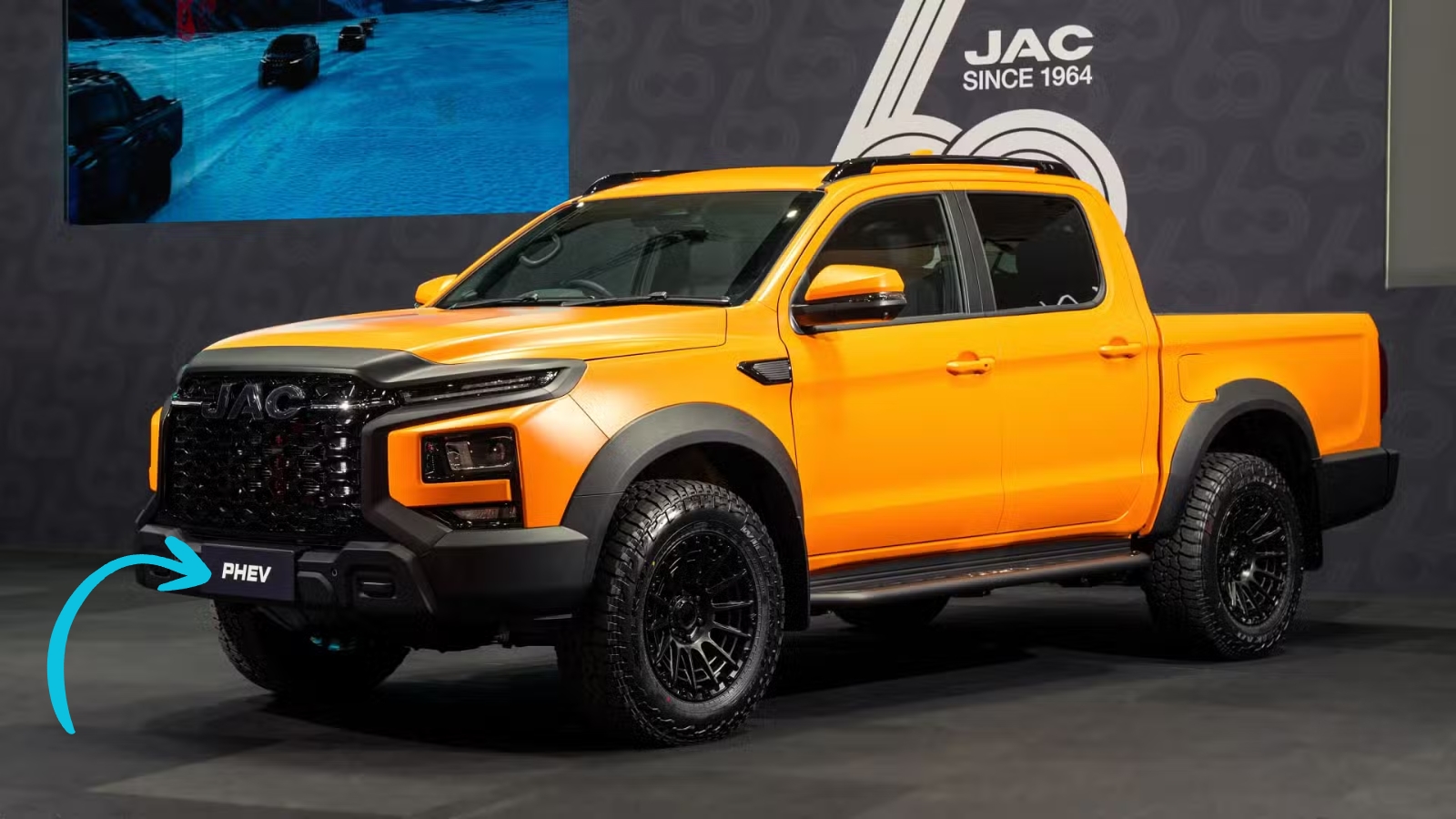Chinese automaker JAC has chosen Australia for the global premiere of something pretty exciting – their most powerful vehicle ever built. The Hunter PHEV isn’t just another ute trying to muscle into our competitive market. It’s a plug-in hybrid that promises to shake up how we think about work trucks.
Starting in early 2026, you’ll be able to walk into a JAC dealer and drive away with what they’re calling the T9 Hunter. This isn’t just a rebadged version of something else – it’s a ground-up approach to making a ute that can handle serious work while sipping fuel like a small car when you need it to.
Power That Actually Matters
Here’s where things get interesting. JAC hasn’t just slapped an electric motor onto an existing engine and called it a day. The Hunter PHEV combines a 2.0-litre turbocharged petrol engine with dual electric motors to deliver 385kW of power and an impressive 1000Nm of torque.
To put that in perspective, that’s more twist than most heavy-duty diesel utes can manage. Whether you’re pulling a boat up a steep ramp or hauling building materials to a job site, this kind of torque means the Hunter PHEV should handle whatever you throw at it.
Electric Range for Real-World Use
The 32kWh lithium iron phosphate battery isn’t just there for show. JAC claims you’ll get at least 100 kilometres of pure electric driving, which covers most people’s daily commute without burning a drop of fuel.
For tradies working in noise-sensitive areas or anyone who wants to cruise silently through suburban streets early in the morning, this electric-only capability could be a game-changer.
Key Specifications Comparison
| Feature | JAC Hunter PHEV |
|---|---|
| Engine | 2.0L Turbo Petrol + Dual Electric Motors |
| Total Power | 385kW |
| Total Torque | 1000Nm |
| Battery | 32kWh Lithium Iron Phosphate |
| Electric Range | 100km+ |
| Expected Towing | 3200kg (based on current T9) |
| Expected Payload | 1045kg (based on current T9) |
| Launch Date | Early 2026 |
Competition Heating Up
The Hunter PHEV isn’t launching into an empty market. BYD’s Shark 6 has already made waves, and GWM’s Cannon Alpha PHEV is establishing itself as a serious player. Ford’s also preparing a Ranger PHEV that should arrive around the same time.
This competition benefits everyone. When manufacturers have to outdo each other, we get better vehicles with more features at competitive prices.
What Sets It Apart
Inside the cab, JAC has made some thoughtful changes from the standard T9 diesel. The most noticeable difference is a rotary gear selector replacing the traditional stick shift. It’s a small change that frees up console space and gives the interior a more modern feel.
The vehicle-to-load capability means your ute becomes a mobile power station. Whether you’re camping off-grid or need to run power tools at a remote job site, the Hunter PHEV can supply electricity to whatever you need to plug in.
Practical Considerations
Towing and Payload
While JAC hasn’t released final towing and payload figures for the Hunter PHEV, the current T9 diesel manages 3200kg of braked towing capacity and 1045kg payload. These numbers should carry over to the hybrid version, making it genuinely useful for serious work.
Charging and Infrastructure
With Australia’s charging network expanding rapidly, the Hunter PHEV’s plug-in capability becomes more practical every month. Even if you can’t charge at home, workplace charging or public fast chargers mean you can still take advantage of that electric range.
Real-World Benefits
The beauty of a plug-in hybrid is flexibility. Use electric power for quiet morning starts, fuel savings on short trips, and the combined power system when you need maximum capability. It’s like having two vehicles in one.
JAC’s decision to debut the Hunter PHEV in Australia shows they’re taking our market seriously. We’re getting first access to their latest technology, and the early 2026 launch date gives them time to fine-tune everything based on local feedback.
Pricing and detailed specifications will come closer to launch, but early indications suggest JAC wants to be competitive rather than premium. That could make the Hunter PHEV an attractive option for anyone wanting hybrid capability without paying luxury prices.
The Hunter PHEV represents something new in the Australian ute market – serious capability wrapped in efficient technology. Whether it succeeds will depend on pricing, dealer support, and how well it performs in real-world conditions. But for now, it’s definitely worth watching.
Frequently Asked Questions
Q: When can I buy the JAC Hunter PHEV in Australia?
A: The Hunter PHEV (called T9 Hunter locally) launches in early 2026 through JAC dealers.
Q: How far can it drive on electric power alone?
A: JAC claims at least 100 kilometres of pure electric range from the 32kWh battery.
Q: Will it match diesel utes for towing capacity?
A: Based on the current T9 diesel’s 3200kg towing capacity, the PHEV should offer similar capability.
Hyundai Ioniq 9 Revealed Big Electric SUV Coming to Australia
